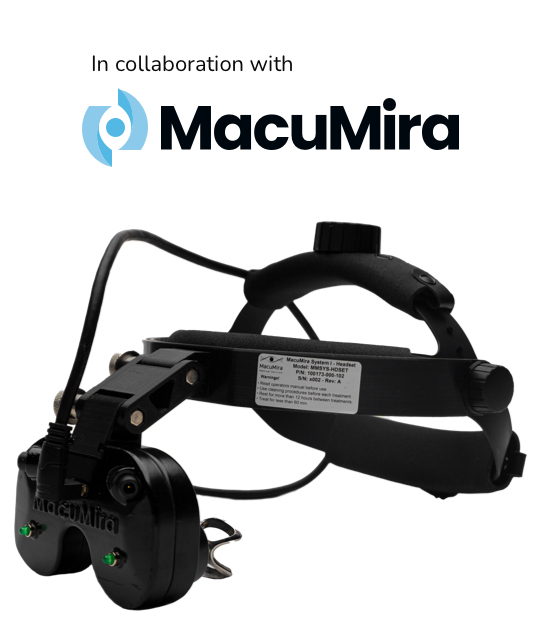Whether you’re just opening your new eye care practice or you’re a seasoned vet of the industry, you should always be open to criticism. Anything you put out to the world, whether it’s a business, an essay, or even a social media post, there will always be someone in opposition to your message.
But in the internet age, how can you tell if these reviews and messages are legitimate or made-up? The web is teeming with bots and fake accounts, and they can negatively impact your review scores if they post about your business too much. In fact, nearly 82% of Google users reported reading a fake review about a business in 2019 alone.
However, there are ways to spot the difference between real and fake reviews, and we’re going to show you how to handle both!
5 Ways to Tell if a Review is Fake
The first thing we’ve got to determine before you take any action is if the review you have is real or fake. Quite simply, treating a legitimate review like a fake one can fragment your relationship with that person and look unattractive to potential patients, so it’s essential to look for a couple of key signs before making any decisions.
Some of the most common signs you can look for include:
Lack of Detail
One of the most recognizable signs of a fake review is a complete lack of detail. Most patients like to give specific anecdotes in their review, detailing step-by-step where their experience went wrong.
When it comes to a fake review, they’ll likely keep their experience quite vague and general. Complaints about a “rude front desk worker” or “poor customer service” are common in fake reviews.
Poor Spelling & Grammar
Many fake accounts are operated by spam corporations located in China, Bangladesh, and India, meaning that a lot of fake reviews are written by non-English speakers.
Now, you can’t expect every review to have perfect spelling and grammar; you’ll likely have a lot of patients who might not speak or write English very well, but coupling this sign with a lack of detail or a history of bad reviews, then you might be dealing with a spam account.
You can also tell if the reviewer is fake by the punctuation they use. For example, a review riddled in exclamation points is often a telltale sign of being fake.

The Reviews Are 1 or 5 Stars
Fake reviews have a significant impact on your final review score, so you’ll likely see fake reviews giving extreme scores like 1 or 5 stars.
You may think that a fake review of 5 stars is a good thing, but potential customers can usually spot a fake review, which might affect how trustworthy they may see you.
Most people tend to trust overall review scores between 4.2 and 4.5 stars, likely because people are skeptical of “too good to be true” services. On top of this, 95% of people will likely believe you’re using fake reviews if they don’t see any bad scores.
The Reviewer Has a Spotty History
If you have a fake review, take a look at the account’s review history. Every reviewer on Google, Yelp, and Facebook has their reviews open and available to the public, so you can search to see if their reviews show any trends that might prove it’s fake.
For example, a fake account may only give bad reviews, target only one industry, or their reviews might stretch different geographic regions regularly.
You or Your Staff Has No Recollection of the Reviewer
Finally, one of the easiest ways to tell if you’re dealing with a fake review is to see if there is a history of the reviewer at your practice.
You can look up your patient files or even ask your staff if the review rings any bells. If the review is legitimate, someone at your business will likely have a memory of the patient.
How to Deal with Fake Reviews
Pause & Process
Now that you’ve established if the review is fake, it’s time to think about what you should do about it. It’s important to act rationally in these situations because there is always a chance that a fake reviewer might be real, even if all the signs might be pointing otherwise.
Speak with your team and get their opinions before taking action against the negative review.
Try to Have the Review Removed
Like Google My Business, most online business tools will allow you to report reviews as inappropriate. Unfortunately, for the sake of transparency, these tools won’t allow you to remove the review outright.
Once you’ve flagged the review, your host may contact you to get more information before removing the review permanently. However, this isn’t a very reliable process, and it could take a while before you see any changes.
Consider Responding Publically
The next best thing to do is to respond to the review publicly. We recommend using a templated response that encourages the reviewer to get back to you and that you’re willing to reconcile the situation.
If it’s a fake review, you might not hear anything back, but other patients will notice your response and see how far you’re willing to go to make your clients happy. If the review is real, you can take the next steps towards making that customer happy.
Attract More Positive Reviews
It’s always important to encourage your patients to leave reviews. Establish a practice of asking for a review with every positive experience you have with a patient.

Handling Negative Reviews
Negative reviews are a normal part of running a business. No matter what industry you work in, you will likely have an off experience with a client, customer, or patient at some point. But at 4ECPs, we believe that these moments are opportunities to earn loyalty.
When it comes right down to it, your patients simply want to know that you have their best interests in mind. You can use several different strategies to reset your patient’s experience and leave them feeling happier than they did before.
Respond Quickly & Publicly
If you get a bad review from a real patient, the first step is to respond as fast as possible with a templated message. In this message, it’s important to express your gratitude for choosing your business and express empathy for their frustration.
Always include contact information and provide a name for the patient to remember.
Encourage a 1 on 1 Meeting
You should always encourage upset patients to respond to you via a private email or a phone call in this message. Each situation is different, and having these conversations available to the public may affect how other people see you handle upset patients.
By getting in a 1 on 1 meeting with the reviewer, you remove the “stage” of the internet from the conversation.
Be Transparent & Own Your Mistakes
This should come as no surprise, but you should always admit when you’ve made a mistake and apologize when it’s suitable.
9 in 10 consumers will stop trusting and purchasing services from brands if they don’t seem transparent, and transparency is key to earning loyalty from your patients.
Offer Solutions
Don’t just hear out what your patient has to say; offer real solutions. We recommend speaking with your team to determine what an appropriate answer might be for the specific situation.
Ask for an Updated Review
If you’re able to turn a negative experience into a positive one, you might be able to ask for an updated review from the patient to help boost your review scores.
You want your patients to know that you’re always looking for what’s best for their needs, and an updated review is the best way to market this aspect of your business with the help of a happy patient.
Ask Our Experts!
There’s a lot to manage when you run an eye care practice, and our team is built to help! We can walk you through the (sometimes) tedious steps of taking your business online so you can focus on what matters most to you.
































